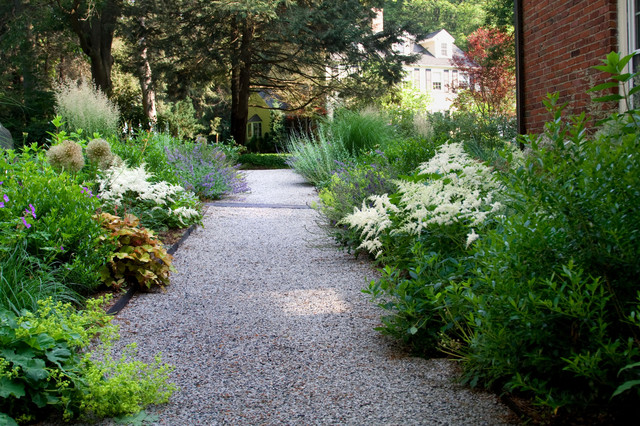Rooting Home in the Soil: How Gardens Turn Houses into Havens
Gardens and the profound sense of place
Need help with your yard? Get your free quote today!
Get a Free Quote!
VICTORIA, B.C.—On a crisp autumn morning, as I stroll through a leafy neighborhood in Victoria, British Columbia, it quickly becomes clear why the city earned the nickname “The City of Gardens.” Nearly every home, whether a tidy bungalow or a stately Victorian, boasts some horticultural flourish—an overflowing hanging basket, a rose arbor, a trimmed hedge framing the porch. Each one quietly announces to passerby: this is not just a house, but a home.
It may be tempting to dismiss such efforts as superficial window dressing—a neat façade of greenery to impress the neighbours. Yet here in Victoria, and increasingly across North America, the garden is becoming a key element in shaping that most elusive of feelings: true belonging. During the pandemic’s lockdowns, interest in home gardening skyrocketed everywhere. Now, as life steadies to a new normal, residents are realizing that tending a garden goes beyond cultivating flowers and vegetables. It cultivates a deeper sense of place, identity, and comfort.
At its core, a garden represents an investment in time and care. A homeowner who plants tulips in November, trusting they’ll bloom in the spring, or who carefully trains a clematis vine to climb a trellis, is making a pledge of commitment. “Creating a garden says, ‘I’m here to stay,’” explains Jillian Henderson, a fourth-generation Victorian who spent the last decade transforming her small, shaded backyard into a tapestry of ferns, hostas, and hydrangeas. “I think of my garden as a conversation with this patch of earth. I’m telling it I value it, and in return, it starts to feel like part of me.”
In a city that celebrates horticulture at every turn—most famously at the Butchart Gardens, where millions of blooms draw visitors year-round—residents often start small. Perhaps it’s a simple planter box on a condominium balcony or a handful of herbs on a windowsill. Over time, these modest attempts can expand into a more personal landscape, a living scrapbook of seasons passing and memories taking root. The process of nurturing plants transforms transient living spaces into stable anchors. Homeowners begin to measure time not just by calendar months, but by when the magnolias blossom or the peas are ready to harvest.
Victoria’s climate, a balance of mild winters and gentle summers, plays a starring role. Few North American cities boast such a generous gardening season. “We can grow almost year-round,” says Chris Millard, a local landscape designer who has watched clients become more intentional about their outdoor spaces over the last few years. “You don’t have to be a professional horticulturalist. Just putting in some lavender or native pollinator plants can turn a sterile front yard into something warm and welcoming. It’s about finding a sense of your own rhythm in a place.”
Beyond aesthetics and personal satisfaction, these green spaces forge connections with neighbours. In many Victorian neighbourhoods, gardens often spill toward the sidewalk—poppy-lined borders and fragrant lilacs that invite conversation. “I’ve met more neighbors in my front yard than anywhere else,” says Ian McFarland, who recently replaced a patch of dull turf with raised vegetable beds. “People stop to comment on the zucchini or ask about the best time to plant sweet peas. Before I know it, we’ve chatted for fifteen minutes. It’s almost like the old porch culture we imagine from decades past.”
This social aspect of gardening resonates powerfully in a digital age often defined by fleeting online interactions. Stepping outside, tools in hand, gives residents an organic reason to linger, observe, and exchange ideas with those living down the street. As relationships flourish among the foliage, the neighborhood becomes more cohesive, and the intangible quality we call “community” takes root.
Local historians note that gardening’s role in fostering a sense of home is nothing new in Victoria. Its British colonial heritage sowed a tradition of ornamental and kitchen gardens, integral to the city’s identity for more than a century. Today, even as modern architecture and global trends reshape neighborhoods, the garden persists as a time-honoured means of self-expression. Newcomers, whether from other parts of Canada or overseas, pick up pruning shears and discover a vernacular that transcends language: planting, growing, and sharing the fruits of their labor.
For renters, too, gardens can provide continuity. “I’ve moved three times in Victoria,” shares Maria Espinosa, a young professional who carefully tends a cluster of potted plants. She transplants them every time she relocates—graceful fuchsias and herbs that remind her of family traditions back in Mexico. “My pots travel with me,” she says. “They make each new apartment feel instantly more familiar. It’s a way of carrying my sense of home from place to place.”
In an era when houses are often talked about as investments or assets, gardening reintroduces the notion that a home is more than property. It is a place shaped and softened by personal touch—a canvas for one’s values, memories, and hopes for the future. “A house gives you shelter,” Henderson points out. “But a garden gives you a reason to linger, to engage, to belong. It turns a set of walls and a roof into something uniquely yours, something that feels alive and welcoming.”
It’s no coincidence that Victoria, renowned for its gardens, also exudes a palpable sense of warmth and rootedness. In the quiet interplay between people and plants, between seeds and soil, the ordinary act of tending a garden proves itself extraordinary: it transforms a house into a home.
